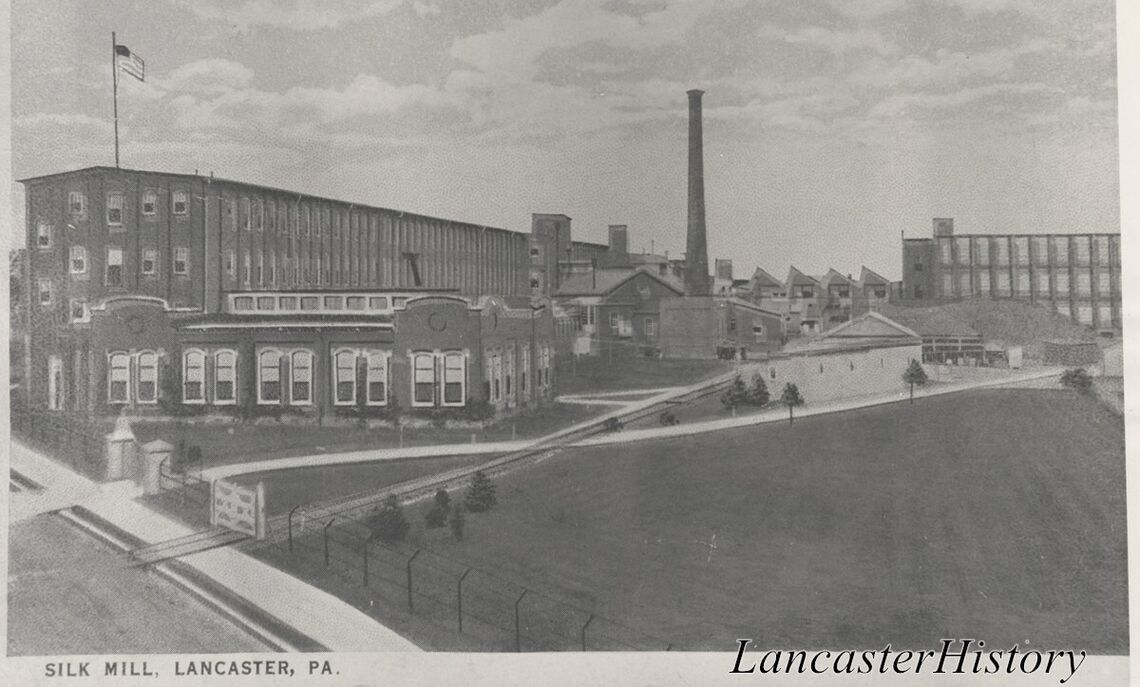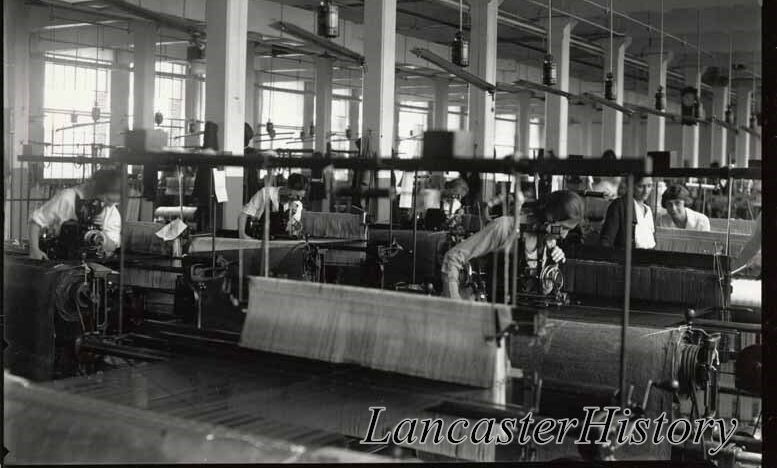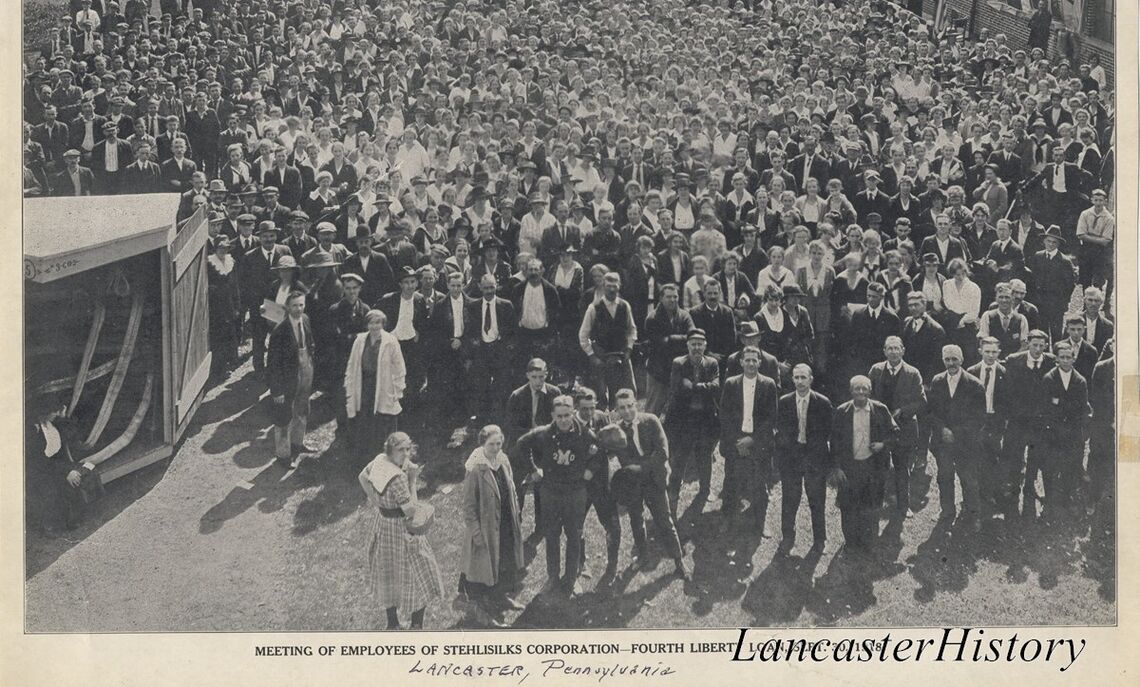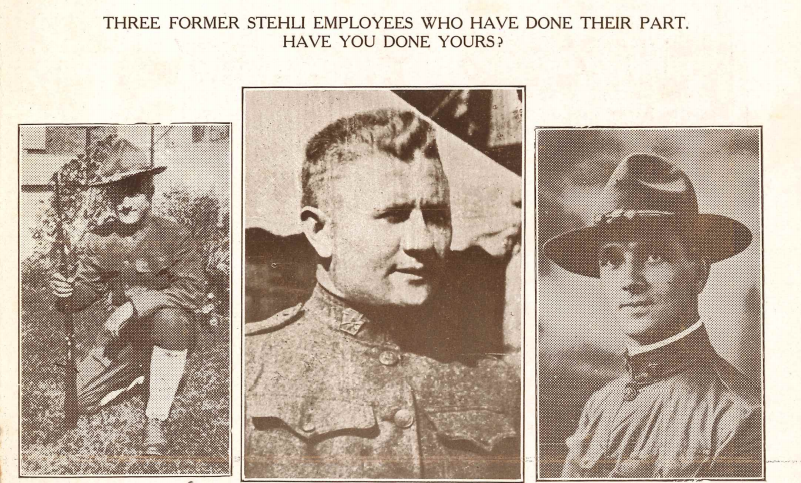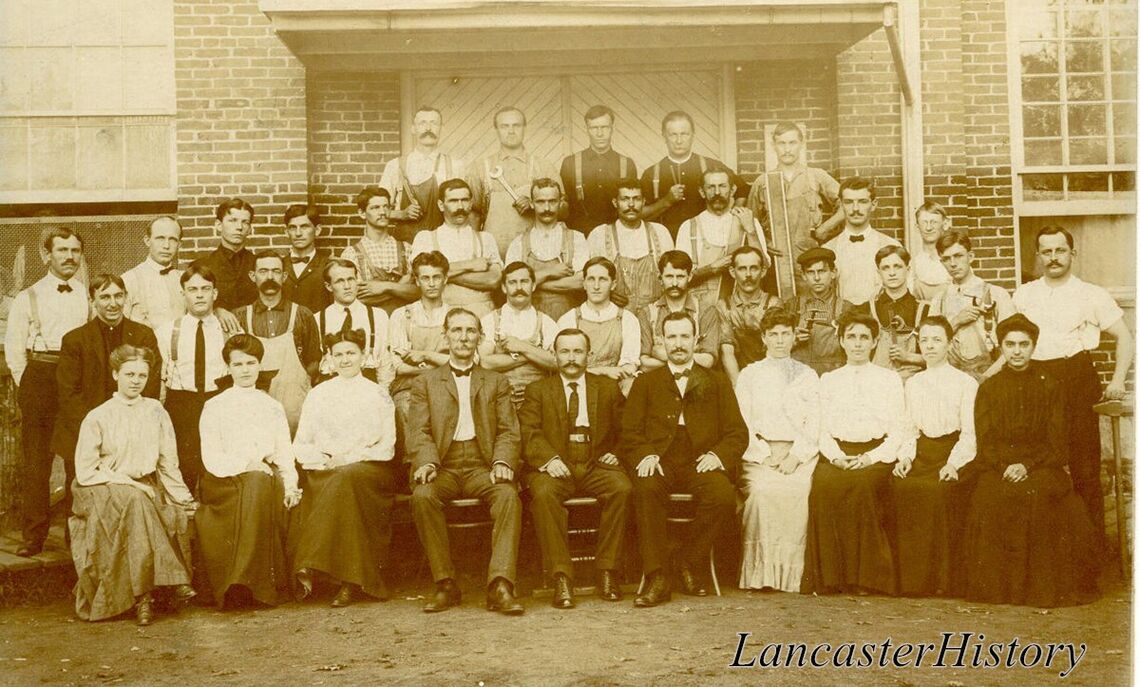F&M Stories
F&M Student Lands on Lancaster's World War I History
During World War I, parachutes were used to drop flares that illuminated trenches and nighttime vehicle movement on the warfront. The silk for those parachutes came from one of the largest silk mills in the United States, located less than two miles from Franklin & Marshall College: the Stehli Silk Mill in Lancaster.
As part of a Hackman summer scholar research project, rising sophomore Jake Miller and Professor of History and American Studies Louise Stevenson are spending this summer digging deeper into the Stehli Silk Mill to discover more about its involvement in the war.
"We're honing in on what the mill was doing by looking at a newsletter the mill produced called 'Our Patriot's Herald,'" Miller said.
Two of these newsletters, dated September 1918 and October/November 1918, are on display at LancasterHistory, Lancaster's historical society. Miller said he is spending the summer examining these newsletters for significance before creating a presentation of his discoveries.
Miller described "Our Patriot's Herald" as patriotic and pro-American, but also biased in its attempts to drum up support for the war.
"One of the things I'm focusing on is how gung-ho they were for the war and how patriotic they were, and how much they wanted their workers to be for the war and be very American," he said.
Miller found few negative comments in "Our Patriot's Herald" regarding World War I. Even mentions of soldier injuries and deaths were included within a victorious context, discussing how these soldiers fought to help America. He said "misplaced" humor in the publication was used to increase excitement and support for a brutal war in which men were maimed and killed with poisonous chemicals.
"The name of the comedy section is 'Trench Gas,' which was like, 'Oh, wow, why would you name the comedy section something that is so serious?' They're kind of putting a really positive spin on things," he said.
"Our Patriot's Herald" became an important addition to an ample archive of F&M's and Lancaster's involvement in World War I. Stevenson works with students each summer to document how F&M and Lancaster joined the war effort—a project that has lasted for more than a decade. Endeavors have included transcribing posters and diaries of those on the frontlines, and researching an ambulance corps that was organized by alumnus Charles Stahr in May 1917.
For students, the research experience is invaluable and enriches what they've already learned in the classroom.
"Instead of teaching about something that's abstract, they can actually see it happening here on campus or in Lancaster," Stevenson said.
Enhancing the context of what he learned in Stevenson's U.S. and World 1914-1919 course was something particularly enjoyable about this research experience, Miller said.
"It's really cool to take the city I'm in for college and take a look back more than 100 years ago and look at what was going on and what was happening in the mill in Lancaster, Pa., and how that was relating to the war," he said.
Related Articles
October 30, 2024
Jake Lamb ’25: F&M Transfer ‘One of the Best Decisions I’ve Ever Made’
“Becoming a Diplomat has changed me for the better,” said Jake Lamb ‘25. Learn about his experience transferring to F&M and meet other students who made the switch.
September 13, 2024
A Day in the Life: Summer Research at F&M
“F&M’s small class size was perfect for me to engage with my teachers and make the most of my learning experience,” says junior Aayat Tahir, who spent her summer on campus as an organic chemistry research lab assistant.
September 11, 2024
‘Writing a Book I Was Looking For’
History Professor Gregory Kaliss recently received the North American Society for Sport History monograph of the year award for “Beyond the Black Power Salute: Athlete Activism in an Era of Change.”

